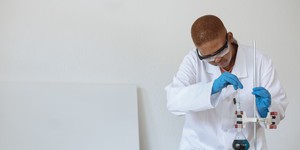Log In
Summary
Areas of Science
Difficulty
Time Required
Average (6-10 days)
Prerequisites
None
Material Availability
Drosophila, daphnia, and other small invertebrate animals can be ordered from online vendors.
Cost
Low ($20 - $50)
Safety
No issues
*Note:
For this science project you will need to develop your own experimental procedure. Use the information in the summary tab as a starting place. If you would like to discuss your ideas or need help troubleshooting, use the Ask An Expert forum. Our Experts won't do the work for you, but they will make suggestions and offer guidance if you come to them with specific questions.
If you want a Project Idea with full instructions, please pick one without an asterisk (*) at the end of the title.
If you want a Project Idea with full instructions, please pick one without an asterisk (*) at the end of the title.
Abstract
Caffeine is a type of chemical called a stimulant. When you drink a caffeinated beverage, the caffeine enters into your blood stream dilating the capillaries and causing blood to flow more quickly. This gives your body a feeling of speeding up which can cause the jitters and wakefulness. How does caffeine affect the physiology of other animals? You can use over-the-counter caffeine supplements, like Vivarin, to test the effects of caffeine on animals. Try dissolving the caffeine in aquarium water to test the effect of caffeine on aquatic animals like goldfish, worms, water fleas snail, or copepods. You can measure the respiration of a goldfish by counting gill movements. You can also watch the beating of the heart in daphnia, or the water flea, to measure the effect of caffeine on heart-rate. To test the effect of caffeine on terrestrial animals, you can grind up caffeine tablets and add to food. Try adding ground up caffeine tablets to Drosophila growth medium to measure the effect of caffeine on fly activity levels. Similar experiments can be done with meal worms or ants. Can you measure a dose response curve for the effects of caffeine on animal physiology? Can you conduct a similar experiment to examine the effect of nicotine using an over-the-counter smoking remedy? Hint: Start with caffeine or drug dosages that are equivalent to those given to a human, but correct for the difference in weight between a human and the test animal. For example, if a human who weighs 100 pounds gets 1 gram, then a test animal who weighs 1 pound should only be given 0.01 grams.Ask an Expert
Do you have specific questions about your science project? Our team of volunteer scientists can help. Our Experts won't do the work for you, but they will make suggestions, offer guidance, and help you troubleshoot.
Careers
If you like this project, you might enjoy exploring these related careers:
Career Profile
Ever wondered what wild animals do all day, where a certain species lives, or how to make sure a species doesn't go extinct? Zoologists and wildlife biologists tackle all these questions. They study the behaviors and habitats of wild animals, while also working to maintain healthy populations, both in the wild and in captivity.
Read more
Career Profile
Pharmacists are the medication experts. They advise doctors, nurses, and patients on the correct drug dosage for a patient's weight, age, health, and gender; on interactions between drugs; on side effects; on drug alternatives; on costs; and on ways to give drugs. They also dispense drugs at pharmacies, according to prescriptions, checking for dangerous drug interactions, and educating patients on how to take drugs, what reactions to watch out for, and how long it should take for drugs to work.
Read more
Career Profile
Growing, aging, digesting—all of these are examples of chemical processes performed by living organisms. Biochemists study how these types of chemical actions happen in cells and tissues, and monitor what effects new substances, like food additives and medicines, have on living organisms.
Read more
Related Links
Cite This Page
General citation information is provided here. Be sure to check the formatting, including capitalization, for the method you are using and update your citation, as needed.MLA Style
Science Buddies Staff.
"Coffee Buzz: How Does Caffeine Affect the Physiology of Animals?" Science Buddies,
20 Nov. 2020,
https://www.sciencebuddies.org/science-fair-projects/project-ideas/Zoo_p030/zoology/how-does-caffeine-affect-animal-physiology?class=AQU8yl9H_trk-swpp0elKiFb4_8WVALvB1APpJ3-VJgeTQE62rzf4V8_HW2siLQNlT9fvHHhN9OL1vRRoDVfNx-5qrZ_lSR4aDUdMctiTl9PNw.
Accessed 23 Apr. 2024.
APA Style
Science Buddies Staff.
(2020, November 20).
Coffee Buzz: How Does Caffeine Affect the Physiology of Animals?
Retrieved from
https://www.sciencebuddies.org/science-fair-projects/project-ideas/Zoo_p030/zoology/how-does-caffeine-affect-animal-physiology?class=AQU8yl9H_trk-swpp0elKiFb4_8WVALvB1APpJ3-VJgeTQE62rzf4V8_HW2siLQNlT9fvHHhN9OL1vRRoDVfNx-5qrZ_lSR4aDUdMctiTl9PNw
Last edit date: 2020-11-20
Explore Our Science Videos
How to Make Magnetic Slime
Write and Read Braille – STEM activity
Make a Whirlybird from Paper









